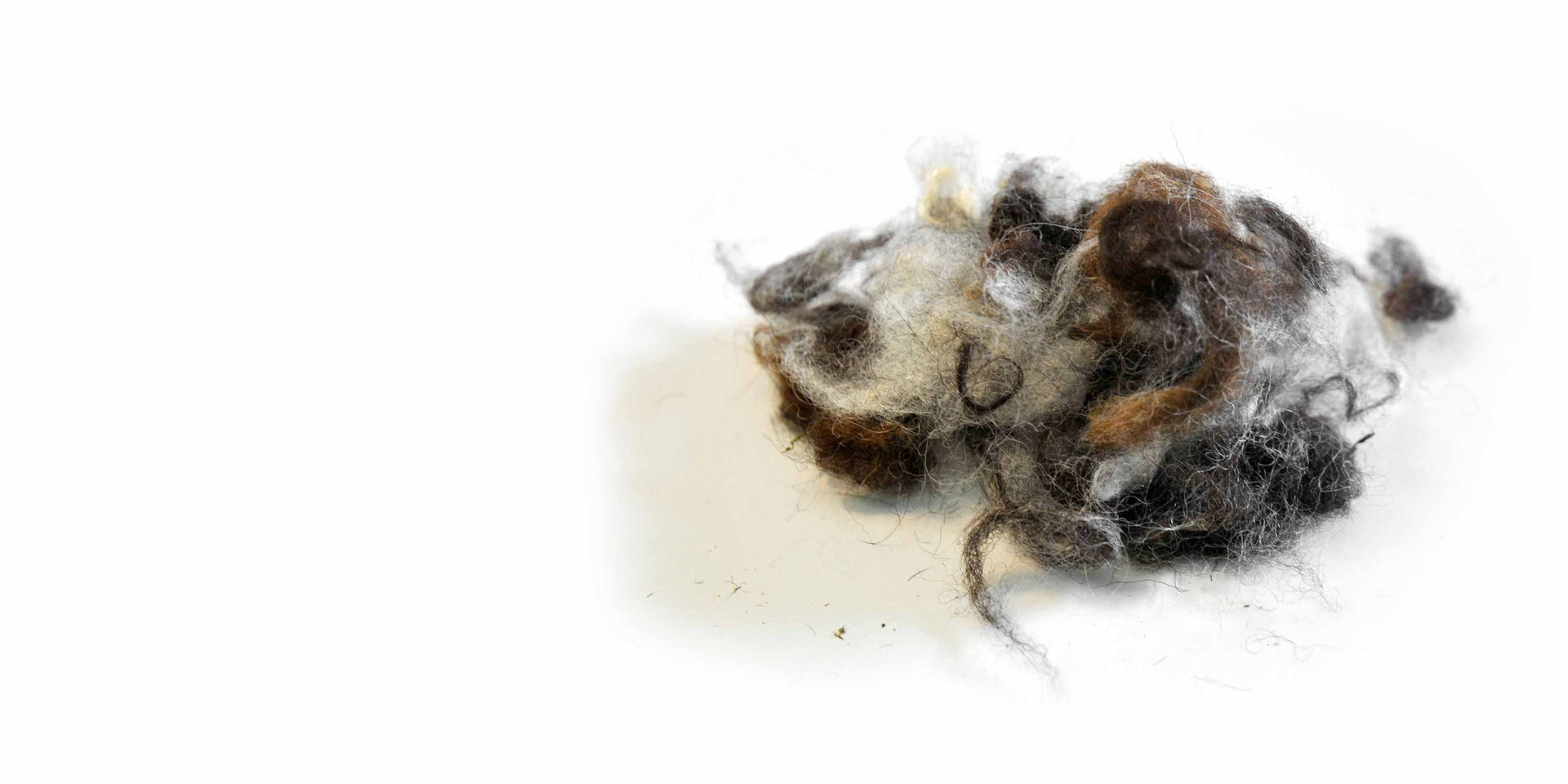

UNDERSTAND
Room Acoustics & Room Design Made From Sheep's Wool
Improve room acoustics with sheep's wool
Materials such as concrete and glass play an important role in architecture and design. However, the smooth surfaces result in poor room acoustics. It starts to echo. The wool used in Whisperwool calms noisy rooms. Language becomes more understandable and communication becomes more pleasant.
The fine hairs of sheep's wool are responsible for this. They are set in motion by sound. By converting the kinetic energy into heat energy, the sound is absorbed and the room acoustics are improved. With Whisperwool acoustic absorbers on the wall, ceiling or as a room divider you can whisper, more is no longer necessary and concentration while working increases.

“I'm so interested in wool because when I'm shearing sheep, I notice that the farmers have to throw the wool away or give it away. And that’s not right.”
Andreas Pillichshammer,www.ihr-schafscherer.at
SHAPE
High Quality Design Made From Sheep's Wool
Whisperwool combines room acoustics with room design. The matt surface of the sheep's wool, its natural colors and our patented technology give both our design team and inspired interior designers almost endless scope for design.
Whisperwool design sound absorbers can be shaped, folded, dyed, printed, trimmed, embossed, x-rayed...
ECOLOGY
Sustainable Design Made From Agricultural Waste Sheep's Wool
Whisperwool is the sustainable acoustic solution made from sheep's wool.
Sustainable raw materials that have a positive impact on the environment are important to us. Sheep's wool is a renewable raw material that is created as a waste product in agriculture.
Whisperwool is Made in Austria.
We focus on regionality, which is why we primarily use Tyrolean sheep's wool and always know exactly under what conditions the sheep live and are sheared. The natural acoustic solution Whisperwool supports the regional value chain and is manufactured by a certified public good company, Tante Lotte Design GmbH.
Whisperwool is recyclable.
A long service life and reusability are the hallmarks of our acoustic panels. Sheep's wool does not age. The lifespan of Whisperwool is therefore very long. Nothing stands in the way of reuse. The sustainable design protects the environment and promotes the circular economy. If waste still arises, we reprocess Whisperwool into Whisperwool.
HEALTHY
Health Through Sheep's Wool
Whisperwool not only improves room acoustics but also the room air. With our natural acoustic solutions, a small ecosystem moves into indoor spaces. The natural product sheep's wool is active here. Sheep's wool cleans itself and its surroundings at the same time. It filters pollutants from the air and absorbs air moisture.
Whisperwool allows interiors to be designed ergonomically in two different ways:
-
Improving room acoustics
Whisperwool reduces noise. This means there is less psychological stress caused by noise.
-
Improvement of the indoor climate
Whisperwool filters toxins from the air. This reduces physical exposure to harmful substances.
Whisperwool has a positive effect on human health:
SAVE
Cost Savings Through High Acoustic Effectiveness
Whisperwool absorbs the frequencies in the main speech range without overdamping (300 to 3500 Hertz). Whisperwool acoustic panels and panels are highly sound-absorbing from a frequency of 100 Hertz (lower values were not recorded). Whisperwool has a very good “early decay time” (EDT Early Decay Time), a benchmark from acoustics that evaluates the perceived reverberation time (reverberation).
The distance from the wall increases the absorption in the low frequencies and the absorption effect can be increased with additional back insulation. This means that usually only half the area is required compared to other systems to create pleasant rooms.
Even a small amount of Whisperwool sound absorbers results in a high acoustic effectiveness. In this way costs can be saved.





















